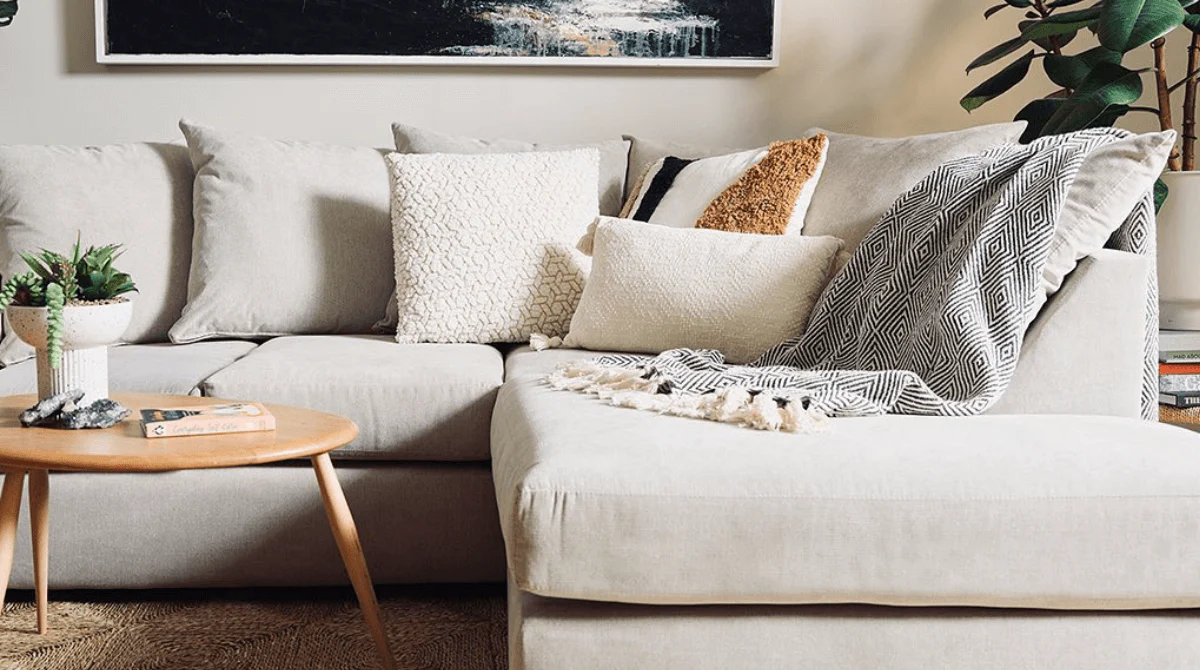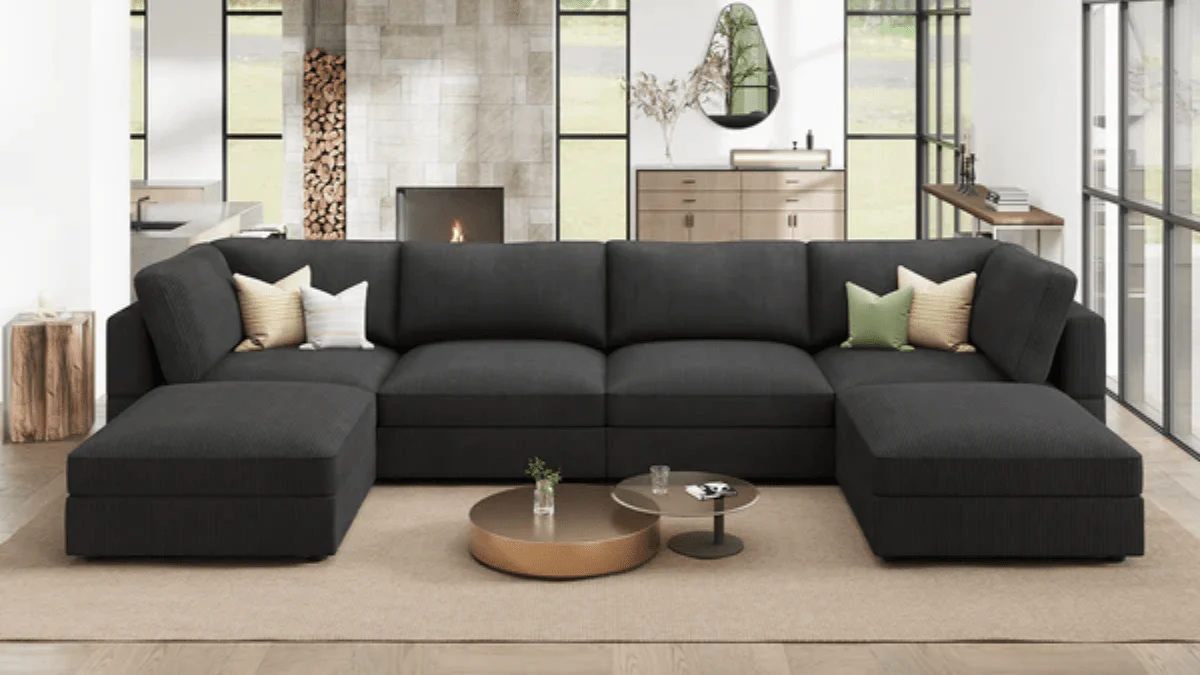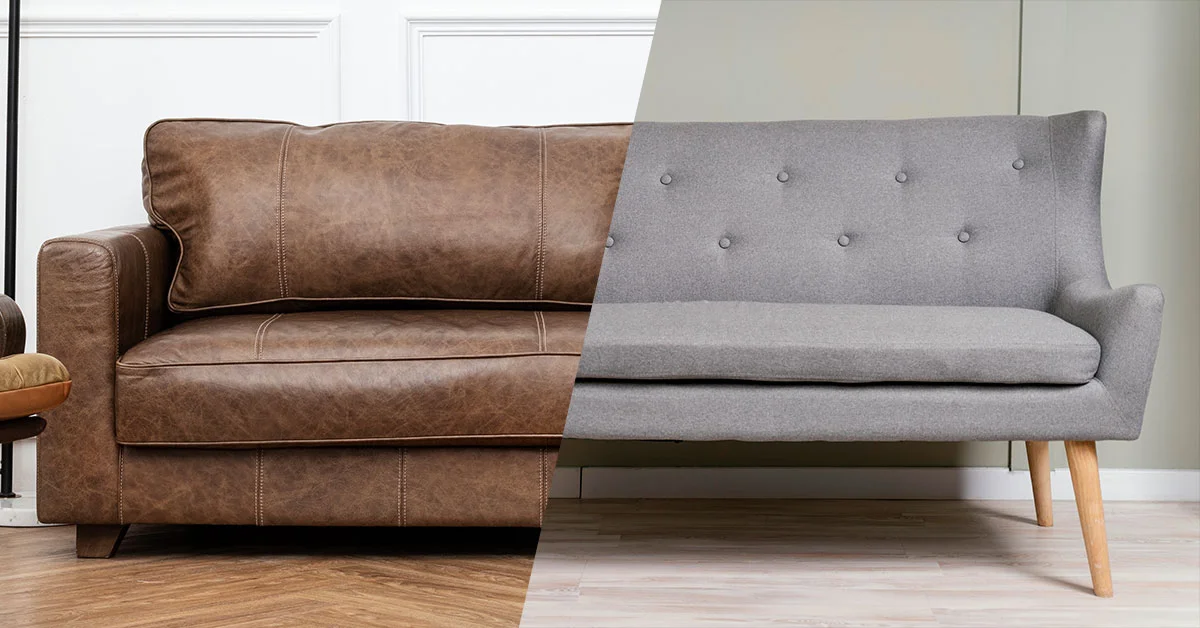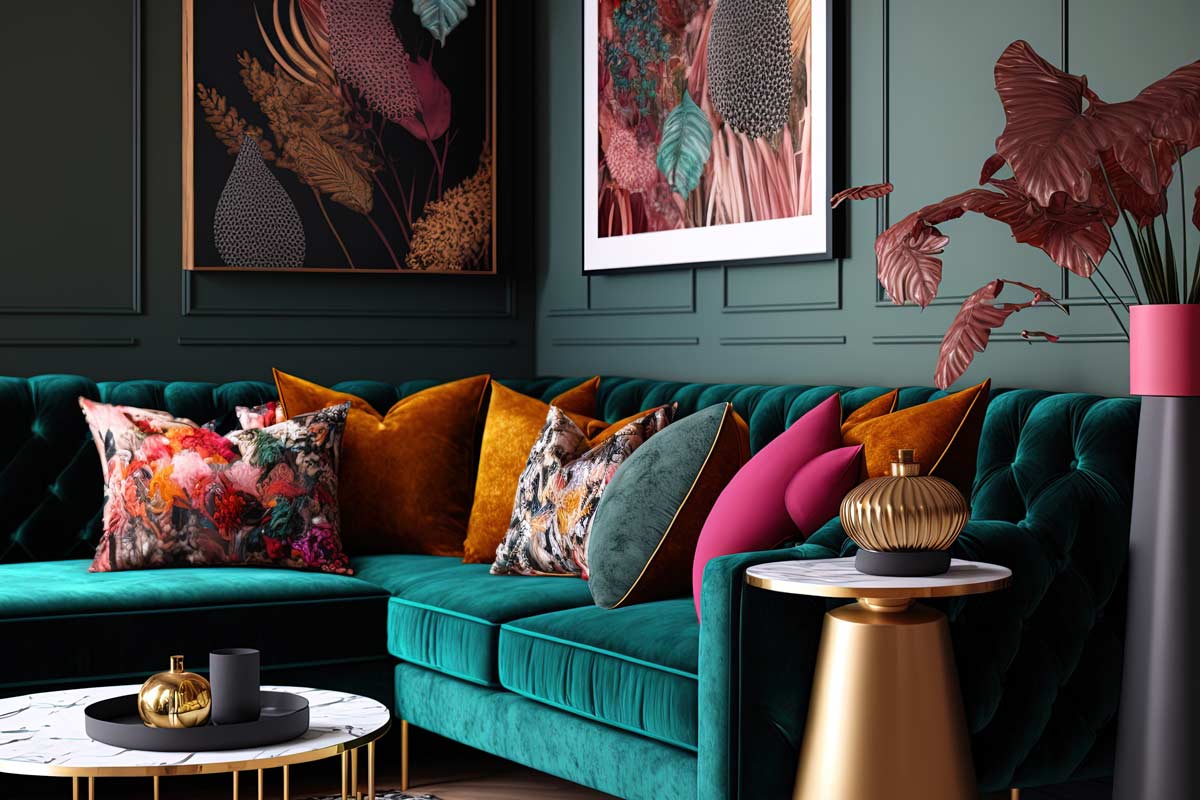Selecting the perfect corner sofa for your living space requires precise measurements to ensure that it fits seamlessly and enhances the aesthetics of your room. Taking the time to measure accurately will save you from potential issues during delivery and placement allowing you to avoid unnecessary complications. Whether you are moving into a new home or redecorating your current living room, understanding how to measure a corner sofa properly is essential for creating a comfortable and functional environment.
Assessing Room Layout
To begin with the first step involves assessing the layout of the room where the corner sofa will be placed. Understanding the room’s dimensions is crucial because it helps you determine the available space and guides your decision making process when selecting the right sofa size. Take note of any architectural features such as windows doors radiators and built in shelves that might affect the placement of the sofa. This assessment provides clarity on how much space is actually usable for furniture placement.
Measuring Room Dimensions
Next you should measure the overall length and width of the room. Use a reliable tape measure to record these dimensions ensuring that the measurements are accurate. Measuring along the walls gives you an idea of the maximum length and width a sofa can occupy without crowding the room. Additionally, pay attention to the ceiling height. While this may not directly influence the sofa’s placement it does affect the visual balance of the room. A low ceilinged room might feel overwhelmed by a sofa with a high back whereas a room with a high ceiling can accommodate taller furniture pieces without appearing cramped.
Ensuring Smooth Traffic Flow
Once you have the room dimensions it is time to consider the traffic flow within the space. Think about how people move through the room and how the placement of the sofa might impact this movement. Ensure that there is enough clearance around the sofa for people to walk comfortably without bumping into furniture. This is especially important if the room serves as a passageway to other parts of the house. A good rule of thumb is to maintain at least three feet of clearance around the sofa to facilitate smooth movement.
Measuring Entry Points
After assessing the room and its traffic flow the next step is to measure the entry points. These include doorways, hallways, staircases and elevators that the sofa will need to pass through during delivery. Measure the width and height of each entry point and compare these measurements with the dimensions of the sofa. Don’t forget to account for any architectural features such as narrow turns or low ceilings that could pose challenges during delivery. If the sofa’s dimensions exceed those of the entry points it might be impossible to get it into the room no matter how well it fits once inside.
Measuring Corner Sofa Dimensions
Now that you have a clear understanding of the room dimensions and entry points it is time to focus on measuring the specific dimensions of the corner sofa itself.
Width
Start by measuring the overall width of the sofa. This is the distance from one arm of the sofa to the other measured across the back. Accurate width measurements help ensure that the sofa will fit along the intended wall or corner without extending too far into the room.
Depth
Next measure the depth of the sofa which is the distance from the backrest to the front edge of the seat. The depth measurement is important for understanding how much floor space the sofa will occupy. Deeper sofas provide a more relaxed seating position but require more space making them better suited for larger rooms. If space is limited a shallower sofa might be a better choice.
Height
The height of the sofa is another critical dimension to measure. This measurement is taken from the floor to the top of the backrest. It is important to consider the height in relation to other furniture in the room such as shelves, window sills and wall mounted decor. A sofa that is too tall might obstruct windows or wall art while a low profile sofa can create a more open and airy feel.
Chaise Measurements
If the corner sofa includes a chaise measure the length of the chaise as well. This is the distance from the back of the sofa to the end of the chaise. Accurate chaise measurements are essential for determining whether the sofa will fit comfortably in the corner without extending too far into the room. Additionally take note of the direction of the chaise whether it is left facing or right facing to ensure that it aligns with the layout of your room.
Diagonal Depth
Another important measurement is the diagonal depth of the sofa. This is a diagonal line measured from the top back of the frame to the front of the arm. The diagonal depth is crucial for determining whether the sofa can fit through doorways and other tight spaces during delivery. To measure the diagonal depth accurately use a measuring tape and ensure that it follows a straight line from the highest point of the backrest to the front edge of the arm.
Seat Depth and Seat Height
In addition to these key dimensions it is also helpful to measure the seat depth and seat height. The seat depth is the distance from the front edge of the seat to where it meets the back cushion. This measurement affects the comfort level of the sofa deeper seats are more comfortable for lounging while shallower seats are better for formal seating. The seat height is the distance from the floor to the top of the seat cushion. Consider the seat height in relation to other furniture in the room such as coffee tables and side tables to ensure a harmonious arrangement.
Visualizing the Sofa is Fit
Once you have measured all the relevant dimensions it is time to visualize how the sofa will fit into your space. One effective method is to use painter’s tape to mark the dimensions of the sofa on the floor. This allows you to see the exact footprint of the sofa and how it interacts with other elements in the room. Walk around the taped outline to ensure that there is enough clearance for movement and that the sofa doesn’t overwhelm the space. Alternatively, many furniture retailers offer augmented reality (AR) tools that enable you to virtually place the sofa in your room using a smartphone or tablet. These tools provide a realistic preview of how the sofa will look and fit in your space making it easier to make informed decisions.
Considering Aesthetics and Functionality
In addition to visualizing the sofa is fit, consider the overall aesthetics and functionality of the piece. Think about how the sofa’s design color and texture will complement your existing decor. Light colored sofas can make a room feel larger and more open while darker tones create a more intimate and cozy atmosphere. Choose a fabric that aligns with your lifestyle for example performance fabrics are ideal for families with children or pets because they are durable and easy to clean.
Evaluating Functionality
Functionality is another important factor to consider. Think about how the sofa will be used and whether additional features such as reclining sections or built in storage are necessary. Ensure that there is enough space for these features to be utilized comfortably without obstructing other furniture or pathways.
Finding the Dimensions of Sectionals for Classic Accessories Covers
Start by measuring the depth. Measure the front edge of the armrest to the outer edge of the backrest. For finding the length dimensions measure along the backrest from armrest to corner on each side. For the height measure next to the sectional from the floor to the top of the armrest. Use these dimensions to choose the best cover size.
Planning for the Future
Lastly, think about the future when selecting a ideal 6 seater corner sofa. Consider whether you might move the sofa to a different room or a new home in the future. Modular sofas which consist of separate pieces that can be rearranged offer flexibility and adaptability making them a great choice for those who value versatility.
Conclusion
In conclusion measuring a corner sofa requires careful planning and attention to detail. By taking accurate measurements of your room entry points and the sofa itself you can ensure a seamless fit and avoid potential challenges. Visualizing the sofa’s placement and considering its aesthetics and functionality will help you make an informed decision that enhances the comfort and style of your living space. With the right approach selecting a chesterfield sofa becomes a rewarding experience that transforms your room into a welcoming and stylish haven.





